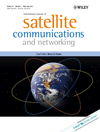
INTERNATIONAL JOURNAL OF SATELLITE COMMUNICATIONS AND NETWORKING
Scope & Guideline
Pioneering Research in Global Networking Solutions
Introduction
Aims and Scopes
- Satellite Communication Systems Design:
Research on the design and optimization of satellite communication systems, including novel architectures, algorithms, and methodologies for enhancing performance. - Integration with Terrestrial Networks:
Studies focusing on the integration and coexistence of satellite systems with terrestrial networks, particularly in the context of 5G and beyond. - Advanced Signal Processing Techniques:
Investigations into signal processing methods, including beamforming, MIMO, and interference management to improve satellite communication reliability and efficiency. - Emerging Technologies in Satellite Systems:
Exploration of cutting-edge technologies such as AI, machine learning, and quantum communications as they pertain to satellite systems. - Network Performance and Resource Management:
Research on resource allocation, network optimization, and performance analysis in satellite networks, including hybrid satellite-terrestrial systems. - Environmental Impact Studies:
Assessment of environmental factors affecting satellite communications, such as atmospheric conditions and their impact on signal propagation.
Trending and Emerging
- Low Earth Orbit (LEO) Constellations:
There is a significant increase in research focused on LEO constellations, driven by advancements in satellite technology that allow for high throughput and low latency communication. - Integration of AI and Machine Learning:
Emerging studies highlight the integration of artificial intelligence and machine learning in optimizing satellite communication processes, including predictive maintenance and resource management. - 5G and Beyond Integration:
Research on the integration of satellite systems with 5G networks is trending, emphasizing the role of satellites in providing connectivity for IoT and enhancing terrestrial network coverage. - Quantum Communication Technologies:
The exploration of quantum communication methods is on the rise, reflecting interest in secure communication protocols and the potential for quantum-safe satellite networks. - Environmental and Atmospheric Impact Studies:
There is an increasing focus on understanding the environmental impacts on satellite communication, particularly studies related to atmospheric effects and propagation challenges.
Declining or Waning
- Traditional Geostationary Satellite Focus:
There has been a noticeable decrease in research centered around traditional geostationary satellites, as the focus shifts towards low Earth orbit (LEO) constellations and hybrid systems. - Basic Satellite Communication Protocols:
Research on fundamental satellite communication protocols has waned, likely due to the advancement in more complex and integrated systems that require innovative solutions. - Static Satellite Systems:
The exploration of static satellite systems has diminished as dynamic and adaptive systems, such as those utilizing AI and machine learning, gain more attention. - Single-Satellite Solutions:
There is a declining interest in single-satellite solutions, as researchers are now more focused on multi-satellite constellations and their cooperative functionalities.
Similar Journals
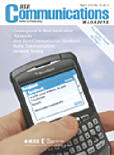
IEEE COMMUNICATIONS MAGAZINE
Navigating the Evolving Landscape of TechnologyIEEE Communications Magazine, published by the Institute of Electrical and Electronics Engineers (IEEE), is a leading journal in the fields of Computer Networks and Communications, Computer Science Applications, and Electrical and Electronic Engineering. With an impressive impact factor reflected in its Q1 quartile rankings across multiple categories, this periodical stands at the forefront of technological advancement and innovation. Since its inception in 1979, the magazine has been committed to disseminating high-quality research and insightful reviews that address current issues in communications technology. Targeting an audience that includes researchers, industry professionals, and students, IEEE Communications Magazine strives to foster a deeper understanding of emerging trends and challenges in the communications sector. Its affiliation with IEEE, a global leader in advancing technology, underlines the journal's credibility and significance in supporting scholarly communication in electrical and electronic engineering. The magazine operates without open access options, necessitating subscription or institutional access for its comprehensive content.

MICROWAVE JOURNAL
Unveiling the Future of Microwave EngineeringMicrowave Journal, published by Horizon House Publications Inc, is a well-established platform in the field of Electrical and Electronic Engineering, specifically focusing on the advancements and applications of microwave technology. Since its inception in 1969, the journal has consistently delivered high-quality research, making it an invaluable resource for professionals, researchers, and students alike. Despite its Q4 ranking in Scopus for 2023, the journal plays a crucial role in disseminating knowledge and fostering innovation within its niche, showcasing developments across various areas including microwave systems, components, and applications. Although it does not offer Open Access, the journal’s comprehensive insights and peer-reviewed articles are essential for anyone looking to deepen their understanding of microwave engineering. By maintaining a rigorous editorial standard, Microwave Journal continues to shape the discussion and evolution of microwave technology.
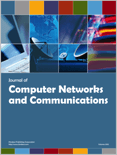
Journal of Computer Networks and Communications
Elevating Standards in Networking ResearchThe Journal of Computer Networks and Communications is a premier open-access journal published by HINDAWI LTD, dedicated to advancing the field of computer networks and communications. With an ISSN of 2090-7141 and an E-ISSN of 2090-715X, this journal has been accessible to researchers since its inception in 2011, promoting widespread dissemination of knowledge in this rapidly evolving discipline. Based in Egypt, the journal's editorial standards are upheld through a rigorous peer-review process, contributing to its strong academic reputation. As of 2023, it holds a commendable Q2 ranking in Computer Networks and Communications and a Q3 ranking in Information Systems within its category quartiles. According to Scopus rankings, it occupies the 141st and 143rd positions in its respective fields, showcasing its relevance and influence in the academic community. The journal's mission is to publish high-quality research that addresses contemporary challenges in networking technologies and systems, making it an essential resource for researchers, professionals, and students seeking to innovate and excel in these fields.
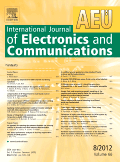
AEU-INTERNATIONAL JOURNAL OF ELECTRONICS AND COMMUNICATIONS
Bridging Gaps with Cutting-Edge Research.AEU - International Journal of Electronics and Communications, published by Elsevier GmbH, is a leading peer-reviewed journal that has become an essential resource for scholars and professionals in the fields of electronic communications and electrical engineering. With an impressive impact factor reflective of its rigorous scholarship, the journal holds a Q2 ranking in the category of Electrical and Electronic Engineering, placing it in the top tier of its field. This journal primarily focuses on publishing innovative research, reviews, and advancements that facilitate the convergence of electronics and communication technologies. As it strides through various converged years, from 2001 to 2024, AEU delivers critical insights and cutting-edge developments to a global audience, encouraging collaboration among researchers and practitioners. With its accessible platform, researchers are invited to contribute their findings and to stay abreast of the latest trends and discoveries in this dynamic field, strengthening the journal’s vital role in shaping the future of electronics and communications.

Infocommunications Journal
Connecting Knowledge in Computer Science and EngineeringInfocommunications Journal, published by the SCIENTIFIC ASSOCIATION INFOCOMMUNICATIONS, stands as a vital resource within the fields of Computer Science and Electrical and Electronic Engineering. Since its inception in 2011, this journal has consistently contributed to the discourse surrounding innovations and research trends in these dynamic disciplines, culminating in a converged operational span through 2024. With an ISSN of 2061-2079 and an E-ISSN of 2061-2125, it is indexed in Scopus, showcasing impressive rankings within its categories, notably a Q3 classification in both Computer Science (miscellaneous) and Electrical and Electronic Engineering as of 2023. Although the journal operates under a non-open access model, its contributions are nonetheless essential for researchers and professionals seeking to advance their knowledge and practice. Situated in Budapest, Hungary, at Kossuth Lajos Square 6-8, 1055, the Infocommunications Journal is committed to fostering a rich scholarly exchange, making it an indispensable platform for those invested in the frontiers of technology and communication.
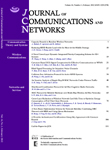
JOURNAL OF COMMUNICATIONS AND NETWORKS
Innovating the Future of Information SystemsJOURNAL OF COMMUNICATIONS AND NETWORKS, published by the Korean Institute of Communications Sciences (KICS), is a leading academic journal that has been at the forefront of the fields of Computer Networks and Communications as well as Information Systems since its inception in 1999. With a strong commitment to advancing research in these critical areas, this journal has achieved a prestigious Q1 ranking in both domains as of 2023, reflecting its significant impact and innovative contributions to the field. The journal features original research, review articles, and technical notes that address the latest advancements in communication technologies, network architecture, and data management strategies. As a vital resource for researchers, practitioners, and students, it not only disseminates valuable findings but also fosters collaboration and knowledge exchange among diverse disciplines within the communications landscape. With a consistent annual volume, the journal continues to shape the future of communications science and offers authors an esteemed platform to showcase their work.

INTERNATIONAL JOURNAL OF COMMUNICATION SYSTEMS
Pioneering Research in Global Communication SystemsInternational Journal of Communication Systems, published by Wiley, is a premier scholarly publication dedicated to advancing the field of communication systems and network engineering. With an ISSN of 1074-5351 and E-ISSN 1099-1131, this journal has emerged as a critical resource for researchers and professionals alike, showcasing innovative research from 1994 to 2024. Holding a distinguished Q2 quartile ranking in both Computer Networks and Communications and Electrical and Electronic Engineering, it ranks within the top tiers of its field, reflecting its high impact and relevance. The journal's focus spans a wide range of topics within these disciplines, including but not limited to, advanced communication protocols, network design, signal processing, and emerging technologies. Although it does not currently offer open access options, the journal remains committed to disseminating high-quality research to contribute meaningfully to the scientific community. Researchers, professionals, and students will find invaluable insights and ideas to further their work and understanding in this dynamic field.

IEEE Communications Surveys and Tutorials
Empowering Researchers with In-Depth Surveys and InsightsIEEE Communications Surveys and Tutorials is a premier journal published by the IEEE-INST ELECTRICAL ELECTRONICS ENGINEERS INC, renowned for its insightful contributions to the field of communications engineering. Since its inception in 2005, this journal has become an authoritative source of comprehensive surveys and instructional materials addressing current trends and advancements in communication technologies. With an impressive Q1 ranking in Electrical and Electronic Engineering, it ranks first among 797 journals in its category, placing it firmly in the 99th percentile according to Scopus metrics. Researchers, professionals, and students alike benefit from its well-researched articles, making it an essential resource for those seeking to deepen their understanding or stay updated on cutting-edge innovations. Although it does not currently operate as an open-access outlet, the journal's commitment to excellence ensures that each publication is a valuable asset for the academic community.

EURASIP Journal on Wireless Communications and Networking
Elevating Standards in Wireless CommunicationsThe EURASIP Journal on Wireless Communications and Networking, published by Springer, stands as a pivotal platform dedicated to advancing the field of wireless communications and networking. With an ISSN of 1687-1472 and E-ISSN of 1687-1499, this Open Access journal has been disseminating high-quality research since 2004, ensuring broad accessibility for scholars and professionals worldwide. Maintaining an esteemed position in the academic community, it is classified in the Q2 quartile for 2023 across critical categories including Computer Networks and Communications, Computer Science Applications, and Signal Processing. The journal's performance is reflected in its Scopus rankings, which place it in the 73rd percentile for Computer Networks and Communications and the 72nd percentile for both Computer Science Applications and Signal Processing. With a focus on innovative research and practical applications, the EURASIP Journal is an essential resource for anyone seeking to contribute to or stay informed in the dynamic landscape of wireless communication technology.

Internet Technology Letters
Pioneering Research in AI and Communication Technologies.Internet Technology Letters, published by John Wiley & Sons Ltd, is a dynamic and rapidly evolving journal that focuses on the innovative applications and developments within the realms of Artificial Intelligence, Computer Networks and Communications, Information Systems, and Software. With its E-ISSN 2476-1508 and a defined convergence period from 2018 to 2024, this journal seeks to address emerging trends and critical challenges confronting the digital landscape today. Recognized in the Q3 quartile range across multiple computer science categories in 2023, it serves as a valuable resource for researchers, professionals, and students seeking to advance their knowledge and stay updated on significant technological advancements. While currently not an open-access journal, Internet Technology Letters holds a prominent position on platforms like Scopus, ranked within the middle percentiles, reflecting its contribution to the academic community. The journal aims to foster connectivity between academia and industry, encouraging submissions that promote interdisciplinary collaboration and innovation. By creating a platform for sharing groundbreaking research, Internet Technology Letters plays a crucial role in shaping future technological landscapes.